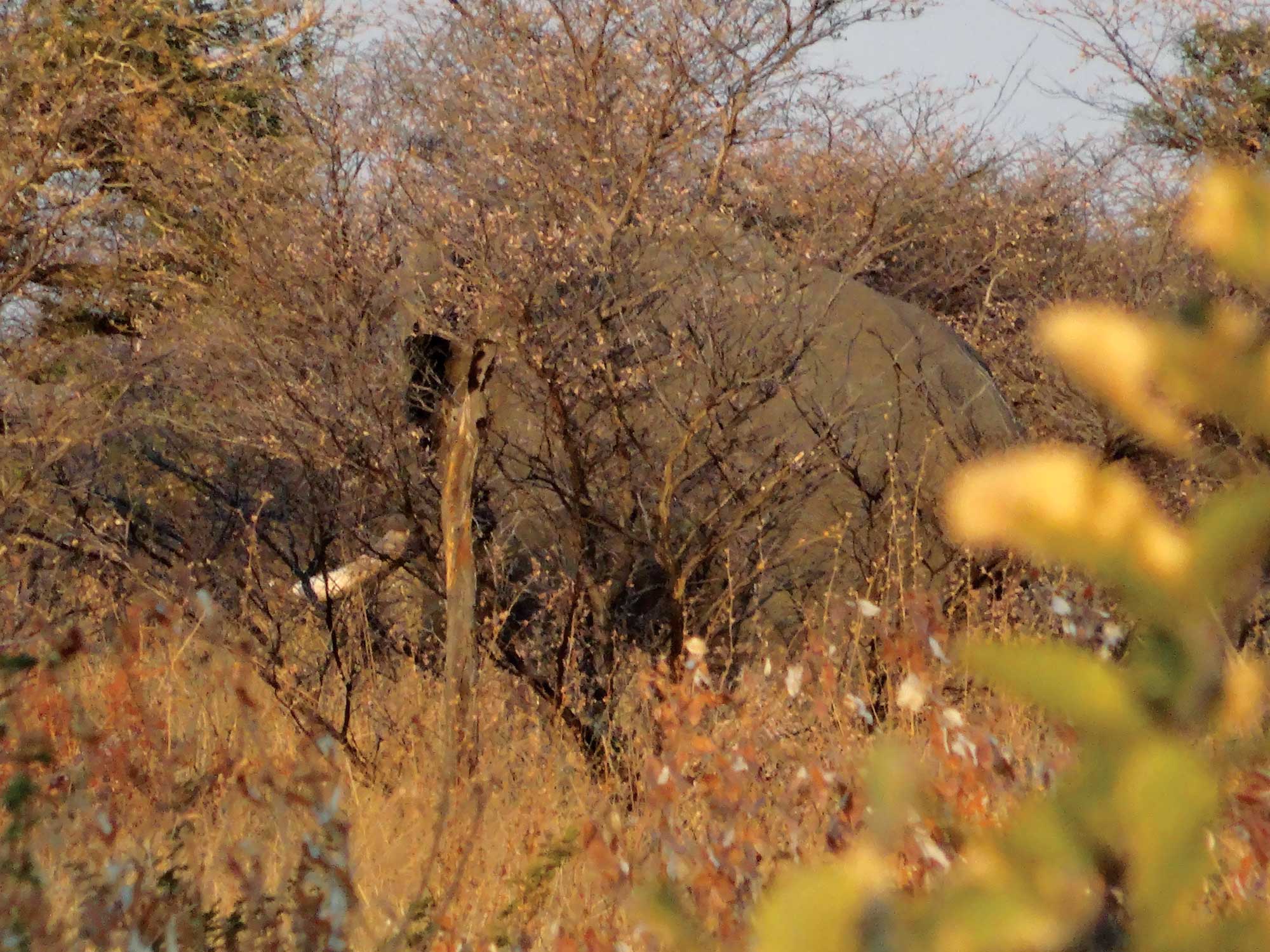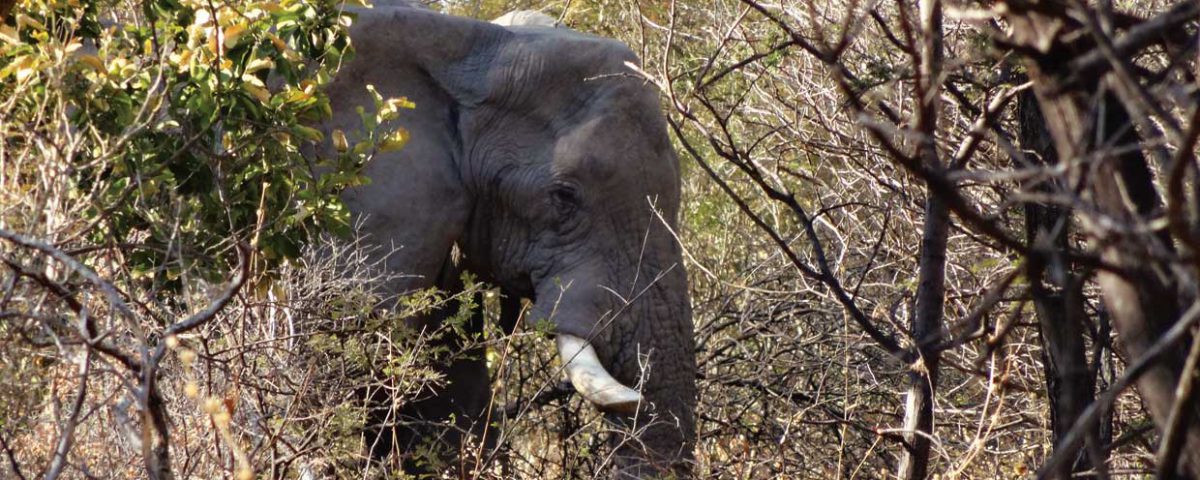| Main photo ©Felix Marnewecke

Some of us still foster dreams at the age of 70
June 9, 2016
Last day eland
June 10, 2016T he client I was guiding was on his third elephant safari with me. We had completed a 30-day safari at the end of the rainy season (April/May). Under extremely tough conditions we had managed to take an old 60 pounder, and now my friend was back to look for a bigger trophy.
We were halfway through the second safari, and although we had walked up a number of old bulls, we had not yet found anything exceptional. Earlier on during the hunt, we had come across the tracks of four bulls crossing the Sigaretti road very close to the village of Tsumkwe. Two of the tracks were those of big old bulls. We had managed to follow the tracks on one occasion, but had lost them when they had moved onto a hard, flat clay area where other elephants had passed and had obliterated the tracks.
On the 14th day we were making our way up to the Khaudum border when we cut the tracks of the same four bulls again, but they were about two days old. Frustrated we continued searching for new spoor. After an unsuccessful day we had to return home and I decided to take the same route back. The sun was sinking fast when we found the tracks of the four bulls again. This time they were on top of our vehicle tracks which we had left in the morning. We all crowded around the tracks trying to determine when the bulls had passed this way. Due to the failing light I was about to call it off until the next day when Kxao, one of my trackers, called me over to him. He pointed at some tiny drops of water on the deep sand. I felt them and they were still moist, indicating that the bulls had drunk somewhere close and were not far off. We grabbed our rifles and moved off on the tracks. The thick sand enabled us to follow the spoor easily and we moved at a quick pace. At first the vegetation was dense and we made a lot of noise due to the speed at which we were going. I had my doubts, but suddenly the bush opened up and we walked out into an area with some vleis interspersed by small islands of mushara trees. We passed the first vlei and were moving through a stand of trees when we spotted the bulls feeding on the other side of the next vlei. At first I only saw one bull and he was impressive, with one big tusk showing as he walked away from me. I glanced over at Kaqece, another one of my trackers. He was smiling and held both of his thumbs up. There was a bush between us, and he gestured for me to come over to him. As I moved over, I saw the bull that he was looking at. That big bull was moving away into thick bush, and I only got a quick glimps of one tusk, but there was no doubt that this was the kind of elephant we had been looking for.
The light was fading fast as we tried to move forward again. This time the bulls heard us, became restless and moved off a short distance. They stood bunched together in a group, all facing in different directions – alert. I whispered for the trackers to stop. After a short discussion we decided to call it a day and return in the morning, so as not to spook the bulls too much. To walk away from such an elephant is not easy, this I can promise you!
The next morning at sunrise we were back on the spot where we had left the elephants the evening before. For the first 45 minutes we struggled to find the outgoing spoor. All the while I questioned the wisdom of letting the bull go the evening before. After what seemed like an eternity one of the trackers whistled to me. Robert had found the tracks and we were moving again.
After we had left them the previous evening the bulls had moved off at a swift pace in a westerly direction. After about an hour of tracking we started to find places where they had been feeding, and a little further on, we found the marks where they had slept for the night.
“As we approached the fallen bull everyone in our small group was silent. It is hard to describe how I felt standing next to this great animal. “
Now everyone was aware that we were not far from the elephants. It still took us another hour before we spotted the first bull. It was the single tusker I had first seen the evening before. He was standing out at about 300 meters on top of a small rise, facing back towards us, throwing sand over his back. That big tusk was glinting in the early morning sunshine. A fantastic sight.
The other bulls were feeding further behind him. We maneuvered downwind of the group and slowly overtook them, hoping to get into a position where they would move towards us. After about an hour of constantly moving ahead of the bulls we were in a position where I thought the big one would walk towards us. Everything went according to plan until the bull was 30 metres away from us, at which point the single tusker overtook ‘our’ bull and moved straight towards our position. As there was no place for us to move to without being detected, I told the client to go for a shoulder shot. As the shot rang out the bulls turned and ran back the way they had come. The client managed to get in another two shots before the bulls disappeared. We all sat down in the sand and had a smoke before we took up the tracks again. After about 500 metres we found the bull standing under a tree. The client gave him a final shot and it was over.
As we approached the fallen bull everyone in our small group was silent. It is hard to describe how I felt standing next to this great animal. I think it was a combination of elation and remorse. Ultimately it had been a good hunt for an animal which was older than most of us standing around it.
Twelve days later we weighed the tusks. They tipped the scales at 87 and 89 pounds.
“He was standing at about 300 meters on top of a small rise, facing back towards us, throwing sand over his back. That big tusk was glinting in the early morning sunshine. A fantastic sight.”

This article was first published in the HUNTiNAMIBIA 2015 issue.


